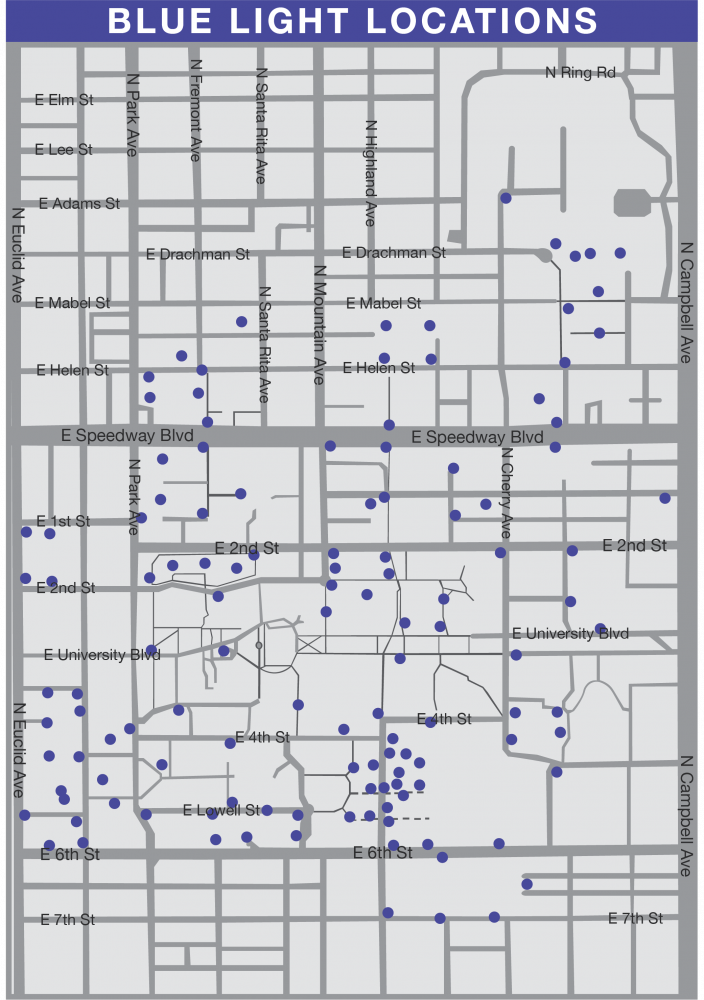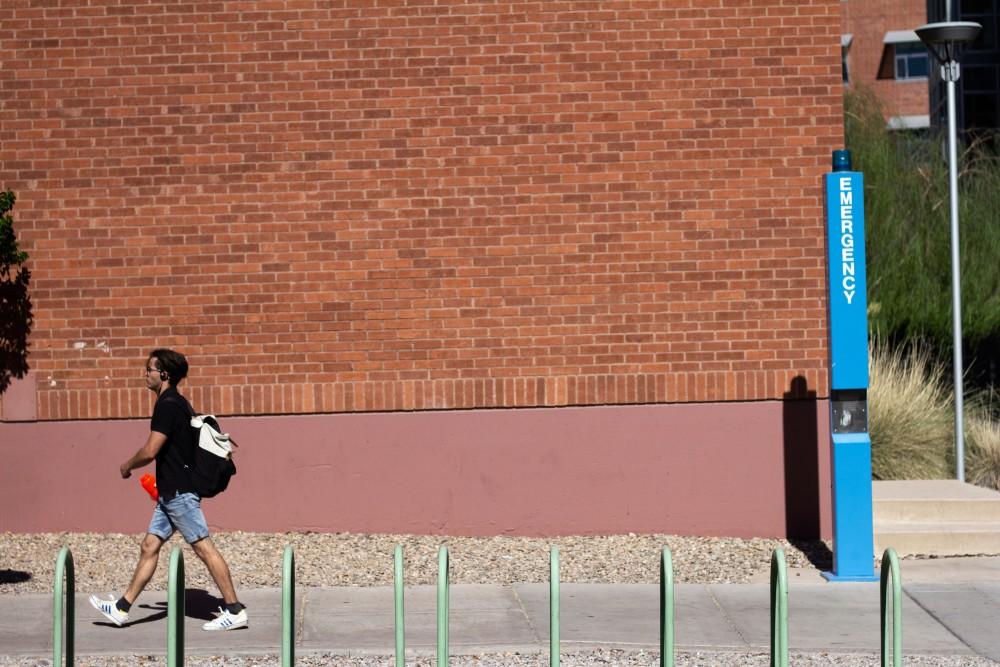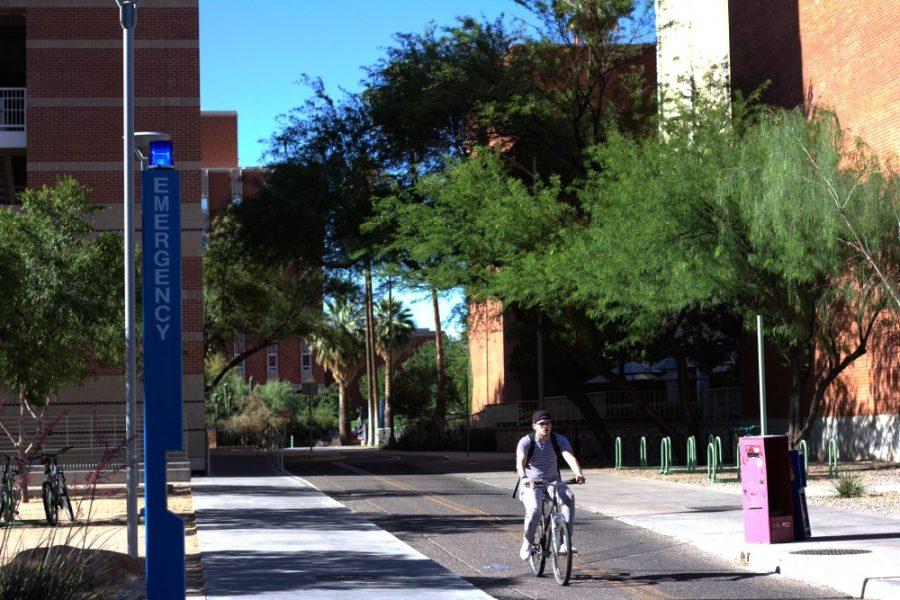Click here to read more content from our 2018 Orientation Guide!
Some students spend hours in a library or attend classes that may end after sundown. Getting home after dark can be potentially dangerous on a big college campus. That’s why the University of Arizona offers emergency services to help provide a level of safety for students, faculty and staff.
In the event someone feels unsafe or witnesses criminal behavior, there are multiple ways to contact the authorities that the University of Arizona Police Department advises to use. But what about a situation where a student has no phone? That’s where Emergency Blue Light Telephones come in.
“[They’re] equipped to directly dial to our dispatch center emergency line and they are very easy to operate,” said UAPD Officer Hernandez.
RELATED: POLICE BEAT: Best of Police Beat 2017-2018
This service is meant to let students or employees move from place to place in the safest way possible. According to Hernandez, UA has approximately 240 EBLTs installed on campus.
The tall, bright-blue telephones are meant to stand at a visible distance from each other around campus and fill the dark with a blue light positioned on top of the kiosk, able to call the UAPD with the push of a large button.

Note: since some EBLTs are clustered together, not all the devices are accounted for.
The UA installed EBLTs so students would be able to notify the UAPD of a student facing imminent danger or of criminal activity in the area.
“These have a GPS locator in them, so every time you hit the emergency button, it sends off a GPS location to our dispatch,” Hernandez said. “If you’re not able to speak, you [can] hit the button and run away if something is happening.”

With over 240 of the devices currently on campus, and with every new structure the UA adds — like a dorm or parking garage — EBLTs are sure to be included.
According to the UAPD’s Emergency Blue Light Telephone map, the devices stretch from East Seventh Street south of campus near the Campus Rec Center, up to University Medical Center by North Ring Road.
“We like to have different ways and options for people to contact the police here on campus,” Hernandez said. “Another way people can get in touch with us is dialing 520.621.8273 or downloading the Live Safe app available on Apple and Android.”
RELATED: POLICE BEAT 4/18/2018: Smokey and the Damaged
The app not only allows users to contact the authorities, but also enables a good Samaritan to take photos and video to send directly to the UAPD.
With more construction underway in neighborhoods northwest of campus, as well as south, more of these lights are to be expected to provide a safe pathway for students walking home.
The UAPD also gives rides for students that would feel more comfortable driving somewhere as opposed to walking alone at night. Another service students can turn to if they need a ride home is the Associated Students of the University of Arizona’s Safe Ride, which can be contacted by phone or by downloading the app.
Follow Victor Garcia on Twitter









